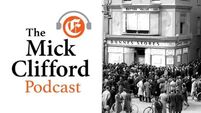Eoin English: Bringing heritage buildings to life again takes time
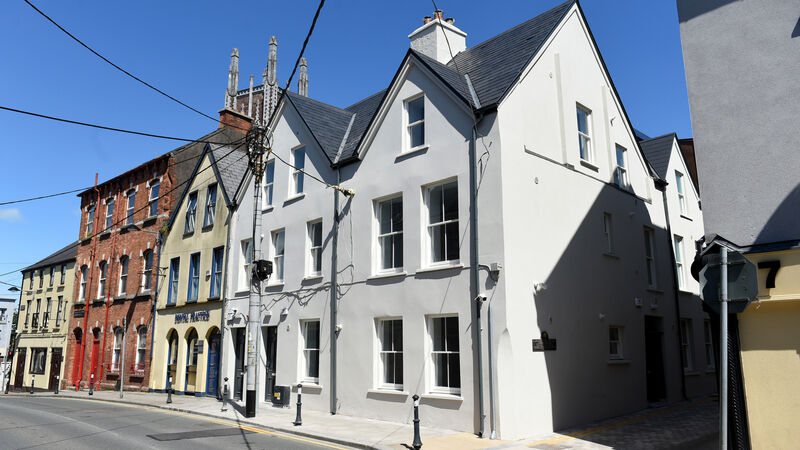
The historic, and protected 18th century Dutch-influenced townhouses, at No 5 and 6 Shandon St which have been restored by Cork City Council as part of a housing regeneration project. Picture: Larry Cummins.
The €2.9m social housing scheme in the shadow of the city’s landmark Shandon steeple, led by Cork City Council and funded by the Department of Local Government, has been hailed by An Taisce as “a boost for the heritage, well-being and economic attractiveness of the city”, and will, according to local community leaders, breathe new life into an entire city block.
The success of the Shandon St project, combined with a raft of other social housing projects on former derelict sites across the city, has again thrown the spotlight on how dereliction can be tackled when the will and funding are there.
Legal moves on Friday in relation to six other high-profile derelict sites have also been hailed as a sign of the city’s new ‘use it or lose it’ strategy which was flagged last year
The sites in question include four adjoining buildings on North Main St which had become the unwelcome poster-child for dereliction in the city, and two more on Barrack St, all of which are linked to the same owners.
Green Party Cllr Dan Boyle said the move to compulsorily acquire the four properties at 62 to 65 North Main St, and two at 118 and 119 Barrack St, sends a strong message to the owners of such buildings that dereliction won’t be tolerated.

The success of the Shandon St project shows what’s possible.
The two near 300-year-old properties at numbers five and six Shandon St are among the few remaining Dutch gabled buildings in the city. Both are protected structures. The property at number 4, also gable-fronted townhouse, is in separate ownership.
The housing scheme involved the restoration of numbers five and six, both of which had fallen into dereliction over a decade, with two adjoining similar but smaller houses to the rear, facing John Philpott Curran St, which are not protected, as well as the infill development of a site on the corner of John Philpott Curran Street and Cathedral Avenue.
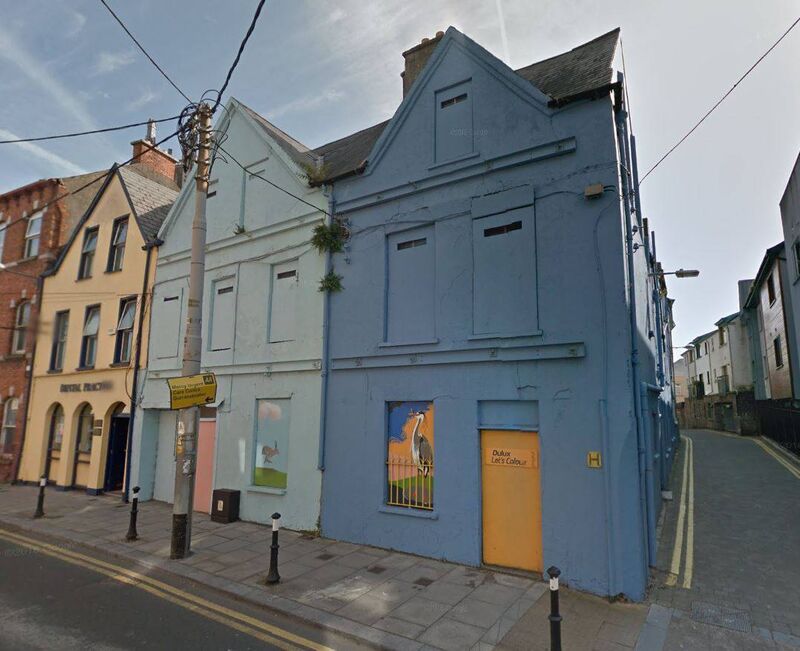
But it is the inclusion and restoration of the pair of striking Dutch-influenced gable-fronted house types which sets this housing scheme apart.
In his report on the buildings in 2014, the city’s conservation officer, Pat Ruane, said the survival of these three gable-fronted houses, numbers four, five and six, which turn the corner into another pair of similar but smaller houses, “is unparalleled in this country”.
The properties at five and six are described in the National Inventory of Architectural Heritage as “a fascinating reminder of an architectural design that was fashionable in the 18th century”.
“Houses of this style were largely remodelled in the intervening centuries, making this group particularly significant,” the entry says.
“The steeply pitched roofs and substantial chimney stacks are also notable features of this period.
Once common in Irish towns and cities, the house type is now very rare but Cork has the largest surviving numbers of them in Ireland.
Local butcher, James Nolan, whose family has run a butcher shop in the area for three generations and who runs his business just down the street at number 23 Shandon St, from another Dutch-influenced gable-fronted townhouse, said great credit is due to all who were involved in the housing scheme, giving the complexities, effort, time and money involved.
He should know. He spent considerable time and money restoring his shop building about a decade ago.
“When we were preparing for that work, we found that parts of the building date from the early 1700s, which make it older than Shandon church itself,” he said.
Mr Nolan, who has been involved in the Shandon Area Renewal Association, the local tidy towns group, and the local business association for several years, said the protected structures had been vacant or derelict for as long as he can remember.
“The easiest thing in the world would have been to level them and build apartments,” he said.
“But Cork has loads of old buildings, and we have to save them and take care of them.
“I can understand that for some people who own historic buildings like this, who might be at different stages of life, maybe in their 60s or 70s, might not want to draw a project like that on themselves.
“They might want to pass the responsibility on to the next generation.
“I know from the work I did on our building about 10-years ago that it takes a lot of time, effort and money.
“So everybody involved in this housing project deserves credit. It really is a super job.
“Lots of people think you can wave a magic wand and make derelict buildings safe for living but it’s not that simple.
The characteristic architectural features of this style of ‘urban vernacular’ building is steeply sloped roofs, with large square masonry chimneys shared between pairs of houses.
The type was once common in Irish towns and cities and can be seen in 18th-century views of Cork city, including in John Butts' painting ‘View of Cork’ which hangs in the Crawford Gallery, or Nathaniel Grogan’s 1797 ‘View of the Northgate’.
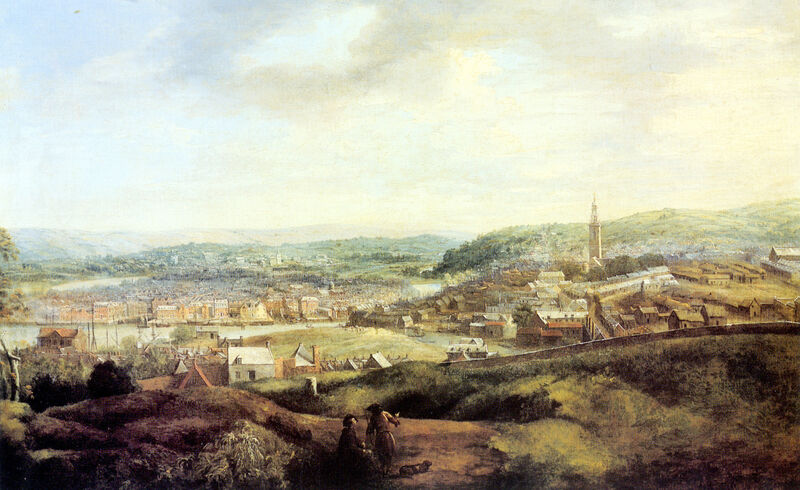
Now very rare, these houses are found mainly along the historic older access roads into the city such as Barrack St, Gerald Griffin St, Shandon St, Francis St, Douglas St and in older more central areas such as North Main St, with individual examples also found on Pope’s Quay, Margaret St and Sheare’s St.
Many, but not all, have lower secondary roofs running perpendicular to the main ridgeline and finish with a low gable to the street, as is the case with the Shandon St houses and the left-hand house of the Pope’s Quay group, or the pair of houses at 22-23 Shandon Streert — one of which is Mr Nolan’s butcher shop.
“When compared with Dublin, Limerick or Waterford, Cork has more original gabled houses than the other Irish cities combined,” Mr Ruane said.
His report detailed the internal characteristics of these house types, which he said is generally plain with small rooms, corner fireplaces and steep dog-leg stairs with winders, and where internal joinery survives, it consists mainly of tall narrow timber-panelled doors or even simpler doors of plain boarding, timber skirtings and staircase handrails sometimes with turned newel posts and balusters but often even simpler square-sectioned timbers.
In the case of number five and six Shandon St, Mr Ruane said they did not have the internal timber-panelled rooms or decorative run plaster cornices of larger houses of the early 18th century period such as those on Fenn’s Quay, Sheare’s Villa in Glasheen or at number 50 Pope’s Quay.
But he recommended that the council commission a suitably qualified and experienced historic building specialist to prepare a record, to include detailed survey drawing and photographs of all existing structures and architectural features, before the building was adapted for social housing.
That survey went on to inform the city architect’s department’s design of a housing scheme which had to retain and incorporate the principal structural elements, including walls, chimney breasts, principal floor and roof structures of the protected buildings, while delivering entrances, stairs, and a lift, to serve the needs of tenants of today.
Cork City Council’s Alison O’Rourke, a senior executive officer in the council’s housing capital delivery section, said despite the challenges, cost and complexities of dealing with protected structures in a scheme like this, the council always seeks to preserve such buildings.
“It may cost a bit more but the council needs to lead on this,” she said.
“These buildings were never in such a precarious situation that they couldn’t be rescued. It was never felt that they were beyond rescue.
“They just needed a bit of imagination, and once funding became available, we were able to proceed.
“But it does take time. And that can be the frustrating part.
“It can sometimes look like there’s nothing happening, but there is often a lot going on in the background on sites like this that people don’t see.
“There is a need for more to be done to tackle dereliction elsewhere in the city, and we see and acknowledge that.
“The department (of local government) is working on funding to support that kind of work.
“For example, it has provided new funding for a buy and renew scheme, to bring suitable properties back into use.
“But again, it does take time.
“It is a very complex issue. It’s not a bad thing that people are highlighting dereliction on social media but it isn’t that simple a problem to resolve either.
“So for us, it’s about prioritising sites. We can’t do everything but we can achieve a lot more through agreement.” She pointed to the Rutland Square scheme on White St, which has been built on a former derelict site, the regeneration of the former Nancy Spain’s site on Barrack’s St, where land title and probate issues took some time to resolve but where 32 houses are now under construction, and another development at Coach St, near the Mercy University Hospital, where apartments are being built on another former vacant and derelict site.
Two other long-term vacant derelict sites — both in Blackpool — have also been lined up by the city council for housing projects, including a 112-unit Cluid housing association scheme and a 35-unit Respond! Housing association scheme.
Like the others, the Shandon St project has taken a number of years to come to fruition, from the council acquiring the two protected buildings, to design and pre-planning, to securing state funding through a complex four-stage process to ensure cost oversight, then on through the Part 8 planning process, tendering for contractors and actual construction.
But now, thanks to funding from the Department of Housing, Local Government and Heritage through the Social Housing Investment Programme (SHIP), a nine-unit sheltered housing project has been created in the heart of one of the city’s most historic areas - including some of the city’s most historic buildings — close to Shandon, the Butter Museum and the Firkin Crane.
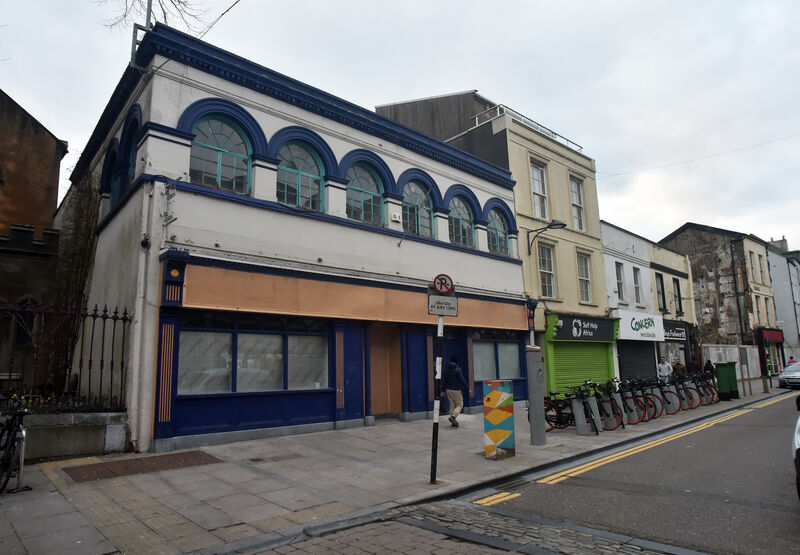
The protected structures have been adapted to include two one-bed units and four two-bed apartments. The infilled site around the corner has been developed to include three one-bed apartments.
It is expected that the development will cater for older people, and will offer some an opportunity to downsize, which in turn helps free up other accommodation for families.
Ms O’Rourke said architect James Bourke deserves huge credit for his work on the scheme, which included a new build on one corner of the site, while respecting and being sympathetic to the environment, the streetscape and the protected structures.
While Covid-19 has delayed the occupation of the complex, the arrangement of tenancies is at an advanced stage and the first residents are due to move in soon.
City architect Neil Purkiss said the regeneration has transformed the image of an urban block in the historic Shandon area, turning it from dereliction to active, fully habitable, energy-efficient and accessible accommodation, for occupation by elderly members of the local community.
“Revitalising run-down urban streets with renovations of historic structures and architecturally appropriate new housing raises the sustainability of the neighbourhood, by connecting into and reinforcing the network of existing local services.
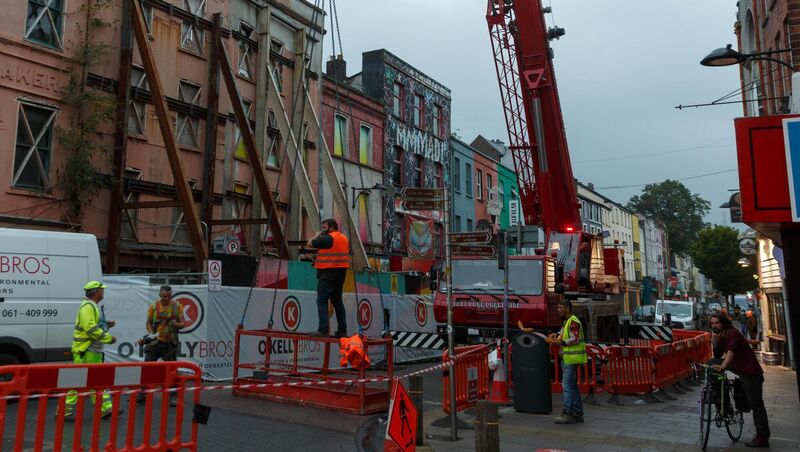
"The long term effect of such initiatives is that over time, they lift communities and transform people's lives,” he said.
The scheme was one of six housing projects which were officially opened or had their sod turned by Lord Mayor Joe Kavanagh on Friday.
Three of the schemes involve development on derelict or vacant sites. A 17-unit scheme has been developed at a former derelict site at Coisceamanna on Lower John Street, and an eight-unit townhouse-style development called Railway View will be built on a former semi-derelict and vacant site at Spring Lane.
A social housing scheme called Rutland Square has been built on a vacant derelict site on White St, 32 homes will be built as part of the regeneration of the derelict former Nancy Spain’s site on Barrack’s St and apartments are also being built on another former vacant and derelict site at Coach St, near the Mercy University Hospital.
Two other long-time vacant derelict sites — both in Blackpool — have also been lined up by the city council for housing projects, including a 112-unit Cluid housing association scheme and a 35-unit Respond! Housing association scheme.



